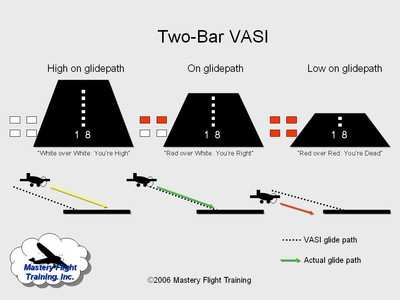Aero-Tips!
A good pilot is always learning -- how many times have you heard
this old standard throughout your flying career? There is no truer
statement in all of flying (well, with the possible exception of
"there are no old, bold pilots.") It's part of what makes aviation
so exciting for all of us... just when you think you've seen it
all, along comes a scenario you've never imagined.

Aero-News has called upon the expertise of Thomas P. Turner,
master CFI and all-around-good-guy, to bring our readers -- and us
-- daily tips to improve our skills as aviators, and as
representatives of the flying community. Some of them, you may have
heard before... but for each of us, there will also be something we
might never have considered before, or something that didn't
"stick" the way it should have the first time we memorized it for
the practical test.
It is our unabashed goal that "Aero-Tips" will help our readers
become better, safer pilots -- as well as introducing our
ground-bound readers to the concepts and principles that keep those
strange aluminum-and-composite contraptions in the air... and allow
them to soar magnificently through it.
Look for our daily Aero-Tips segments, coming each day to you
through the Aero-News Network. Suggestions for future Aero-Tips are
always welcome, as are additions or discussion of each day's tips.
Remember... when it comes to being better pilots, we're all in this
together.
Aero-Tips 05.23.06
Over the years a number of visual guidance systems have been
developed to help pilots avoid obstacles on final approach.
Probably the most common design is the two-bar visual approach
slope indicator -- commonly called the VASI.
VASI is a system of lights arranged to provide visual descent
guidance during the approach to a runway. VASI lights are visible
from three to five miles during the day and up to 20 miles or more
at night. The visual glide path provides obstruction clearance
within +10 degrees of the extended runway centerline, and to four
nautical miles from the runway threshold.
Lateral course guidance is provided by the runway or runway
lights. Don't descend on the VASI glide path until you're visually
aligned with the runway. VASI is particularly useful at unfamiliar
airports or when landing at night, to keep you safely above unknown
or unseen obstacles on the approach path. Instrument pilots find
following the VASI critical when "breaking out" before the Missed
Approach Point, especially on nonprecision approaches.
The basic principle of the VASI is color differentiation between
red and white. Each light unit projects a beam of light having a
white segment in the upper part of the beam and red segment in the
lower part of the beam. The light units are arranged so that the
pilot using the VASIs during an approach will see the combination
of lights shown in the figure below.

Two-bar VASI
Most VASI installations consist of two bars, near and far, and
may consist of two, four, or 12 light units. Light units are
located on one side of the runway, usually the left. Where the
installation consists of 12 light units, the units are located on
both sides of the runway.
Two-bar VASI installations provide one visual glide path which
is normally set at three degrees. Angles at some locations may be
as high as 4.5 degrees to give proper obstacle clearance. VASI
angles in excess of 3.5 degrees may cause an increase in runway
length required for landing and rollout.
Using VASI
- Once you're visually aligned with the runway, fly level until
the VASI shows "red over white". Then initiate a normal descent to
maintain this visual indication until the flare.
- If you are high on glidepath descent at a slightly
higher-than-normal descent rate until you see "red over white",
then transition to a normal descent rate. NOTE: You'll often see
the upper bars start to "turn pink" when you're almost on
glidepath. Use this as your cue to begin moderating your descent
rate.
- If you're low on glidepath and see "red over red", level off or
begin a slight climb until you reacquire "red of white", then
resume a normal descent.
- In many locations you'll need to manually activate the VASI.
See the Airport/Facility Directory.
The VASI glidepath usually aims you at a point about 1000 feet
from the runway threshold. If the runway is particularly short or
you're flying an airplane requiring a long landing roll, it's
especially critical to use the VASI to help you clear obstacles and
land safely.
Aero-tip of the day: Understand and use the
two-bar VASI if it's available at your destination airport.
 Klyde Morris (05.02.25)
Klyde Morris (05.02.25) Classic Aero-TV: Introducing The MD302--Mid-Continent's Standby Attitude Module
Classic Aero-TV: Introducing The MD302--Mid-Continent's Standby Attitude Module ANN's Daily Aero-Linx (05.04.25)
ANN's Daily Aero-Linx (05.04.25) ANN's Daily Aero-Term (05.04.25): Jamming
ANN's Daily Aero-Term (05.04.25): Jamming Aero-News: Quote of the Day (05.04.25)
Aero-News: Quote of the Day (05.04.25)




